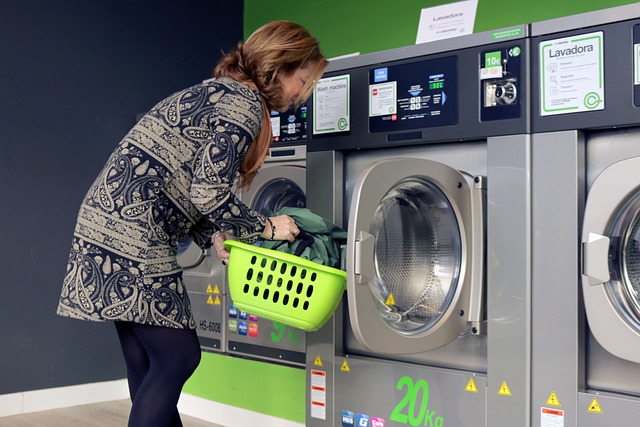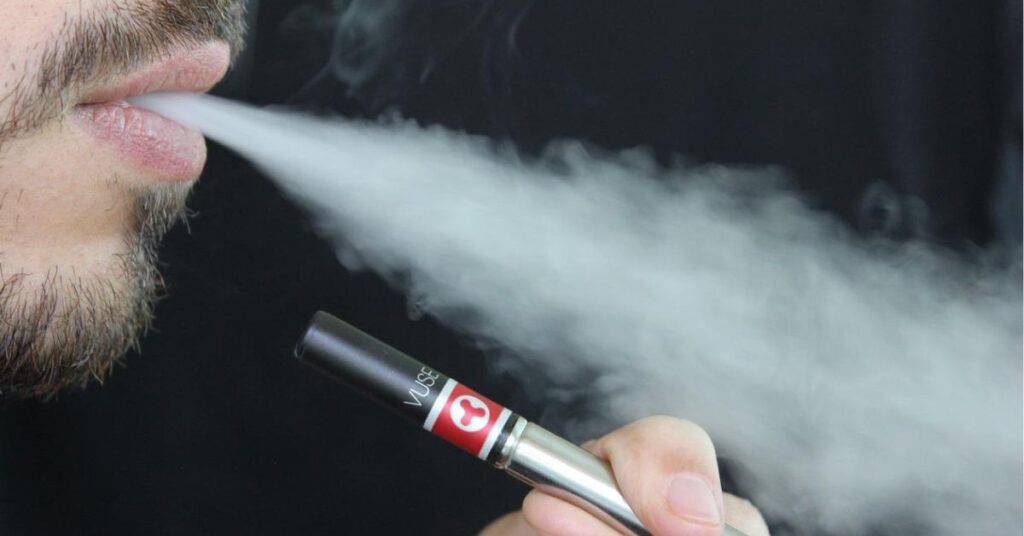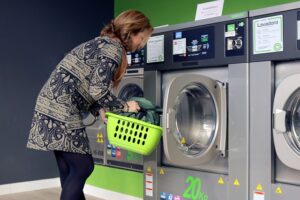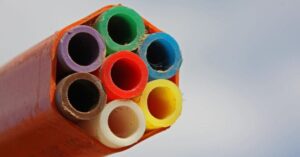xxxxxxxxxx
1: SAME AS EVER (MORGAN HOUSEL)
29.01.2024: The book is seen as a continuation of Morgan Housel’s previous work, “The Psychology of Money,” with a focus on understanding the psychology of people and behaviors that endure over time. The book emphasizes that while the world is constantly changing, certain fundamental principles and human behaviors remain consistent. It serves as a reminder that despite uncertainty, there are aspects of life that can be relied upon. It underlines that certain instincts remain unchanged, even as circumstances evolve. Reading more books is presented as a means to develop better filters and frameworks for making sense of the news. The idea is that exposure to various perspectives enhances decision-making. The advice is to plan like a pessimist and dream like an optimist. This suggests a balanced approach to decision-making, acknowledging risks while maintaining a positive outlook. While some find the book enjoyable, others note that it doesn’t present exceptionally new or insightful ideas. It is mentioned that the content echoes concepts from other works by authors like Nassim Taleb, Matt Ridley, Ray Dalio, and Robert Greene.
Morgan Housel’s love for stories and his narrative style are praised. The use of anecdotes is mentioned as a way to illustrate the lack of rational explanations for many twists and turns in the world. The book encourages reflection on the unpredictability of the future and the role of chance in shaping events. It raises questions about how the world might be different under alternative scenarios. The author suggests a strategy of being both a pessimist and an optimist. Saving like a pessimist and investing like an optimist is proposed as a balanced approach for long-term financial planning. Overall, the reviews suggest that “Same as Ever” offers a thoughtful exploration of human behavior and decision-making, prompting readers to reconsider their approach to finance, life, and uncertainty.
Morgan Housel is a partner at The Collaborative Fund. He is a two-time winner of the Best in Business Award from the Society of American Business Editors and Writers, winner of the New York Times Sidney Award, and a two-time finalist for the Gerald Loeb Award for Distinguished Business and Financial Journalism. He lives in Seattle with his wife and two kids.
xxxxxxxxxxxxxxxxxxxxxxxxxxx
2: EXTRACTION (TAKING OUT, Extracting, Retrieving, Removing/Removal, Separating, Isolating, Zoning Out): (A) Extract the “redundant or disturbing or an interfering” part (or property) of an object (or system), (B) Extract only the “necessary or useful” part (or property) from an object (or system), (C) Extract only the desired (required or non-required) function (in terms of time or space or interaction or condition) from a multi-functional system or object.
Read More: EXTRACTION
3: LOCAL QUALITY (Non-Uniform, Heterogenity, Diversity, Non-homogenous): (A) Change an object’s (or system’s) structure or property from uniform (or homogeneous) to non-uniform (or heterogeneous), (B) Change an object’s (or system’s) external environment from uniform (or homogeneous) to non-uniform (or heterogeneous), Make each (different) part of an object (or system) perform a different useful function, (C) Make a part of an object (or system) perform a direct opposite function (in time or space) or with respect to its other parts, (D) Make each part of a system to function in a locally optimized condition, Let each part of an object (or system) to be placed in conditions most suitable for its function/action.
EXAMPLE: Grip support on tools, Bakelite holders in heating utensils, Aerodynamics protrusions, using water for sharpening or contouring glass edges, Corrosion Protection Coatings, Swiss-Army Knife, Color Box, Pencil with eraser, hammer with nail puller, Photo chromatic Lenses, Night-vision viewfinder, Refrigerated drugs or medicines. Lunch box with compartments optimized for different types of food (hot or cold, solid or liquid etc), Multifunction tools like screwdrivers (multi-head), Ultrasonic drills,
Read More: LOCAL QUALITY
4: ASYMMETRY: (A) Change or replace symmetrical form (s) with asymmetrical form (s), (B) Vary the degree of asymmetry, if an object (or system) is already asymmetrical, change an object’s (or system’s) or property or form to suit the asymmetry in the external environment
Read More: ASYMMETRY
5: CONSOLIDATION (MERGING, Combining, Joining Integrating): (A) Consolidate homogeneous (identical, related) objects in space or objects destined for contiguous operations or functions, (B) consolidate homogeneous (identical, related) or contiguous operations or functions in time (to action or performance together at the same time)
EXAMPLE: Bifocal Lens, Networked Personal Computers, Microprocessors (IC) – Multiple Consolidated Circuits & Functions, Lawn Mover with Grass Collector, Venetian or Vertical Blinds – Vanes Operating in Parallel, Telephone Network (Data, Voice, Video), Medical Diagnositics – Simultaneous Multiple Diagnosis/Test Results.
Read More: CONSOLIDATION
6: UNIVERSALITY (Multi-functionality, Universal, Standardization): Make a part or object (or system) perform multiple (several different) functions; thereby eliminating the need for other parts (or elements) or objects (or systems), Introduce or use commonly (widely or universally) acceptable standards.
Read More: UNIVERSALITY
7: NESTING (NESTED DOLL (Matrioshka) /STRUCTURES, Hierarchical, Multi-Level, Multi-Layer, Recursion, Loops): (A) Place (embed or position or put or insert) an object (or system) inside another object and so on in a recursive manner, (B) Pass an object (or system) through the cavity of another object (or system).
EXAMPLE: Door-within-a-door, Stacked Chairs, Telescoping/Extendable Antenna, Suspended oil storage reservoir (that stores different products in a single unit), Nested Doll, Zoom Lens, Sewing Thread, Needle, Keyring, Lead Pencil, Capillary Action (e.g., in candles), Toilet Roll, Catheter is passed through sheath during angioplasty, Seat-Belt Retraction Mechanism, Retractable Aircraft landing Gear/Seat Belt, Mercury Thermometer, Measuring Cups, Folding Umbrella/Handle, Malls (shops within a shop), File Storage Structure (Folder Within A Folder).
Read More : NESTING
8: COUNTERWEIGHT (ANTI-WEIGHT) : Compensate the weight of an object (or system) by combining or merging with another object (or system) that provides a lifting or counterbalancing or supporting forces, compensate for the weight of an object (or system), with the forces present in the external environment (e.g., use aerodynamic, hydrodynamic, buoyancy and other forces) to provide a lift or counterbalancing force.
Read More : COUNTERWEIGHT
9: PRIOR COUNTERACTION (PRELIMINARY ANTI-ACTION, COUNTER-ACTION): (A) Perform additional useful or harmful action as a counter action (anti-action) to compensate (or prevent) excessive and undesirable effect or harmful effect later on, produced by an object or system (B) Create an action within an object or system such that it opposes undesireable inflluence of environment on its operation or working conditions.
EXAMPLE: Reinforced Concrete (adding steel reinforcements to concrete structures to strengthen and prevent cracking under stress, increasing durability), Masking Tapes for Painting, Pre- Stressed Bolts/Springs (applying tension to bolts before they are used to secure objects, ensuring they remain tightly fastened even under external forces), Pre-Shrunked Cloths (treating fabrics to reduce the likelihood of shrinking when washed, preventing unwanted changes in size and fit), Car’s Rear Window (creating tempered glass for a car’s rear window with pre-compressed surfaces under tension to enhance its strength and resistance to impact.), Buffering (lag or delayed streaming), Masking in X-Ray/Painting (using masking tape to cover surfaces before exposing to radiation or painting to prevent radiations or paint from seeping onto unintended areas or causing a harm).
Read More : PRIOR COUNTERACTION
10: PRIOR ACTION (PRELIMINARY ACTION): (A) Perform required change or action (before it is needed or necessary) to an object (or system) either fully or partially in advance, (B) Place or arrange objects (or systems) in advance such that they can come into action from the most convenient location and when needed (without any delay or idle time).
EXAMPLE: Sterilized Surgical Instruments, Pre-Cooked Food or Ready Meals, Reusable Components, Pre-Assembled Sub- Assemblies, Post-It, Self-Adhesive Postal Stamps, Pre- Pasted/Printed Wall Papers, Fire Extinguishers (in proximity of fire prone areas), Road Signs, Telephone Directory, Fire Drills. , Web Page Indexing (Internet Search), Pre-Heating Car (During Winter).
Read More: PRIOR ACTION
11: CUSHIONING IN ADVANCE (BEFOREHAND CUSHIONING, Emergency Measures, Fallback Options, Design for Failures): (A) Compensate for the relatively low reliability of an object (or system) with emergency measures (or fallback or countermeasure or back-up) prepared in advance (B) Incorporate a preemptive measure or protective feature into a design to avoid or minimize potential issues that may arise during the operation or use of a system.
EXAMPLE: Plastic coating for liquid containers, Back-up Parachutes, Spares, Fire Extinguishers, Air Bags, Quarantine, Vaccination, Immunity Enhancing Drugs, Impact Resistance Packaging, Redundant Parts, Data Back-up, Power Bank, Magnetic Anti-Theft Tags, Emergency Oxygen Masks in Aircrafts. Prior to installing a pipeline across and beneath a road, it is advisable to install a specialized casing for the protection of the future pipeline.
Read More: CUSHIONING IN ADVANCE
12: EQUIPOTENTIAL(ITY): (A) Change the conditions of the operation or characteristics of the object (or system) in such a way that the object (or system) doesn’t need to be lifted/raised or lowered e.g. rolling heavy cylindrical objects on the plane surface instead of lifting it up for the transportation.or (B) significantly reduce the need of energy consumption for the operation by equalizing or neutralizing the forces acting upon an object (or system).
Read More: EQUIPOTENTIAL(ITY)
13: DO IT IN REVERSE (THE OTHER WAY AROUND, Inversion, Upside-Down, Inside-Out, Outside-In, Inversion, Reverse) : (A) Implement an opposite action (i.e. heating instead of cooling or vice-a-versa) as against the desired action dictated by the problem, (B) Make the moveable part of an object (or system) or external environment, stationary (or fixed) – and the stationary (or fixed) part moveable, (C) Turn an object (or system or process) upside-down or inside-out or use other side or property or function than it is originally designed for (D) Swap operands and operators (or their roles) with other or make environment fixed and sub-system or object movable (or vice-a-versa).
EXAMPLE: Home Delivered Food (bring mountain to Mohammed instead of bringing Mohammed to the mountain), Battery Driven Screw Drivers, Moving Sidewalk (transporting standing people), Process of Emptying Containers By Investing Them, Double-sided Wears or Linens (can be used inside-out), Heat Inner and Cool Outer Part (to unlock the stuck parts), Rotate Clockwise (instead of anti-clockwise, vice-a-versa), Treadmill, Reverse Counting (for launches), Turn Down Assembly Upside-Down, Reversible Wears/Belts etc.
Read More: DO IT IN REVERSE
14: SPHEROIDALITY (CURVATURE, CURVE(D), Curvilinear): (A) Replace linear parts and edges with curvilinear parts, flat surfaces with spherical or curved surfaces, and cube (parallelepiped) shapes with ball shapes (B) Use rollers, balls, domes, arches, spirals or in general spherical objects (C) Replace linear or ‘back and forth’ motion with rotational motion (or vice-a-versa) i.e. introduce or utilize centrifugal force.
EXAMPLE: Push/Pull versus Rotary Control Switches, Paper Sheets versus Running Rolls, Ball Point Pens (smooth ink distribution), Arches & Domes Structures in Architectures, Spiral Gear, Screw versus Nail, Threaded Cap versus Push-In Stopper, Wheels, Ferris Wheel, Pulley System, Bicycle Pedaling, Mixer, Grinder, Washing Machine Dryer, Computer Mouse Ball, Cloth Spinning, Spherical Casters instead of Cylindral wheels etc
Read More: SPHEROIDALITY
15: DYNAMICITY (Dynamization, Relative Motion): (A) Alter or adjust the characteristics of an object (or system or process) or its external environment, to gain optimal performance at each stage of its operation, (B) Make an immobile or rigid object (or system or process), movable or interchangeable (or adjustable/adaptable/flexible), (C) Divide an object into elements capable of changing their position relative to each other
Read More: DYNAMICITY
16. PARTIAL OR EXCESSIVE ACTION (More or Less, Slightly Less or Slightly More, Partial or Overdone) : (A) Achieve slightly less or slightly more of the desired effect (or action) from the object (or system), if it is difficult to obtain exactly 100% of the desired effect (or action) or (B) build margins for errors or deviations or buffers in objects (or systems) or introduce tolerance limits or design an object to work within set tolerance limits or introduce or use more than one instance of object (or system) , at an expense, for continuity in case of failure or improving reliability of the system.
Read More: PARTIAL OR EXCESSIVE ACTION
17: TRANSITION TO NEW DIMENSION (ANOTHER DIMENSION, New Dimension, Modifying (Adding or Removing or Changing) Dimension): (A) Transition from one dimension to another, (B) Utilize multi-level composition (or stacking or layering) of objects (or systems), (C) Incline (or turn) an object or place on its side, (D) Utilize the opposite or another side of a given object (or system), (E) Project optical lines into neighboring areas, or onto the reverse side of an object.
EXAMPLE: Clip versus Pins, Coiled or Spiraled wires, Spiral Staircase, Infra-red Computer Mouse Pen (space versus surface), Vertical Car Parks, Multi-CD Rack or Case , Inclined Bi-Cycle Stand, Dumping Truck, Music Tape/Cassette, Advertisements on Reverse Side of Tickets/Coupons, BacK-2-Back Printed Circuit Board, Light Reflectors
Read More: TRANSITION TO NEW DIMENSION
18: MECHANICAL VIBRATION (Vibrate, Oscillate): (A) Utilize frequency or set an object (or system) into oscillation, (B) Increase the frequency of oscillation or vibration (to ultrasonic), (C) Use the resonance frequency of an object (or system), (D) Replace mechanical vibration with piezo vibration,(E) Use ultrasonic vibrations in combination with an electromagnetic field.
EXAMPLE: Vibrating Blades of Electric Shaver, Acoustic or Agitated Cooking, Stethoscope, using radar guns to measure speed of cars on road, Use Vibration for Distribution or Segregation, Ultrasonic Cleaning, Ultrasonic Welding, Resonation for Rapid Cleaning, Gall Stone or Kidney Stone Removal, Quartz Crystal, Mixing Alloys or Materials (in Induction Furnace), Electronic Toothbrush, Filtering/Distributing Using Vibration, Clocks (Quartz Crystal Oscillations) etc
Read More: MECHANICAL VIBRATION
19: PERIODIC ACTION: (A) Replace a continuous action with a periodic or pulsating action, (B) Change the frequency and/or amplitude of periodic action (C) Use pauses or breaks between impulses to provide another or additional (or different) useful action
EXAMPLE: Pulsating Water Sprinklers, Pulsating Bicycle Light, Repetitive Directional Hammering, Ambulance Siren, Alerting or Warning Lamps, Morse Code, Preventive Maintenance, Recharging Periodically, Repetitive Hammering, Modulated (Multi-Frequencye and Multi-Amplitude) Siren or Signals, Flash Lights, Cardio-Pulmonary Respiration (CPR), Traffic Light Frequency (Based On Density & Velocity of Vehicles), Heart Pacemakers (for arrhythmic patients), Variable Speed Wind Turbines, Pulse Oximeters, Randomized Algorithms in Computing.
Read More: PERIODIC ACTION
20. CONTINUITY OF USEFUL ACTION (Steady Useful Action): (A) Carry out an action without a break. All parts of the objects should constantly operate at a full (optimal utilization) capacity or load, at all the time (B) Remove (or reduce) idle or intermittent or non-productive action or effects (or motion or work or steps) or harmful factors
EXAMPLE: Flywheel, 24 Hours Pharmacy, UPS, Park- n-Fly, Revolving Doors, Digital Media with Random Access (instead of linear), Automated Reconciliation, Self-Loading Rifles, Self-Winding Watches, Automatic Sliding Doors, Automatic Faucets, Smart Thermostats, Continuous Inkjet Printers, Solar Powered Street Lights/Water Pumps etc, ATMs, Utilitty (Water, Electricity etc) Services, Fire/Intrusion Suppression or Detection Systems, Vaccination etc.
Read More: CONTINUITY OF USEFUL ACTION
21: RUSHING THROUGH (SKIPPING, Do It In Hurry): (A) Perform harmful and hazardous operations at a very high speed or (B) perform an action for a very short duration or skip a part or phase or stage or step to eliminate or reduce the harmful, destructive, negative or hazardous effect on the object (or system) or its environment
EXAMPLE: Flash Photography, Laser Eye Correction, Explosive Excavation, High Speed Drills (to avoid heating of surfaces), Cut plastic faster before it decomposes or disorients or deforms, Laser Bean Cutting, HIgh Speed Dental Drills, Cutting Materials Faster (Avoiding Heat Generation or Distribution).
Read More: RUSHING THROUGH
22: CONVERT HARM INTO BENEFITS (BLESSING IN DISGUISE, Benefit from Harm, Turn Lemons Into Lemonade, Spin Harm to Gold): (A) Utilize (or transfer or direct) harmful factors – especially environmental – to an object (or system) to obtain a positive effect, (B) Remove (or reduce or eliminate sensitivity to) primary harmful factor by combining it with another harmful factor, (C) Increase the degree of harmful action to such an extent or degree or limit such that (or until) it ceases to be harmful.
EXAMPLE: Recycled paper or used or waste materials, Biofuel, Organic Fertilizers, Red Birth Mark Removal Introducing Green Pigments, High Decibel Music Note Superimposed over Noise, Explosive Excavation, Use waste heat to generate electric power, Overfreezing to make ice brittle, adding a buffer or buffering to prevent lags (ads) or avoid corrosion through contact (mediator).
Read More: CONVERT HARM INTO BENEFIT
23. FEEDBACK (Cross-checking, Cross-Referring, Refering Back, Reverting): (A) Introduce feedback or facilitate detection or measurement, (B) If the feedback already exists change (or reverse or adjust) it
Read More: FEEDBACK
24: MEDIATOR (INTERMEDIARY): (A) Use (or introduce) an intermediary object (or system or process or activity) to transfer or carry out an action ex introduce an intermediary material with a porous structure to enhance specific properties such as filtration, absorption, or diffusion, (B) Connect or merge or combine the object (or system) temporarily with another object (or system) that can be easily removed or separated after its intended period of use
EXAMPLE: Food Preservatives, Chisel (between object and hammer), Teflon (on pans, passes heat (action) to the object, and imparts non- stickiness property), Pot-Holders, Post-It, Paper Clips, Catalysts, Extract-Transform-Load (ETL) tools, Suspensions or Adhesives or Inserts, Multi-layered Software Architecture, Application Programming Interfac (API)
Read More: MEDIATOR (INTERMEDIARY)
25: SELF-SERVICE (Self-X, Automation, Self-Organization, Self-Healing, Self-Service etc): (A) Make an object (or system) to serve itself and (B) Carry out supplementary operations (like repair or correct or organize etc), (C) use waste resources (available at no or low additional expense) – material or energy or time.
EXAMPLE: Self-Balancing Wheel, Self-Cleaning Filters, Halogen Lamps (Regenerating Filament During Use), Biofuel/Fertilizer, Dynamo, Organic Fertilizers, Using Heat, Data Driven Software Algorithm, Self-Testing Software, Combined Heat and Power (CHP) Systems, Automated Teller Machine (ATM), (Food) Ordering or Vending (Dispensing) Kiosks or Machines, Mobile Application (Banking/Investing), (Airport/Hotel) Self-Service Check-in Kiosks, Self-Service Laundary , Self-Healing (Medidation, Biomimetics), Auto-Correction (Spelling, Grammer etc), Self-Healing (like wrinkle free clothes) Synthetic Material or Polymers (Self-Sealing or Restore After Damages) .
Read More: SELF-SERVICE
26: COPYING: (A) Use a simplified, simulated, and inexpensive copy or model or replica of an object (or system) in place of a complex, fragile, expensive, inconvenient to operate original object (or system), (B) Use an optical image or simulation or reflection or projections instead of an object (or system) in original, (C) use an infrared or ultraviolet copies instead of using optical images of an object (or system)
EXAMPLE: Imitation Jewelry, Paper Models, CAD-CAM, Prototypes, Dummies in Crash Testing, Cadavers or Simulated Patients, Computer Simulation, Flight Simulators, Virtual Reality, Audio-Video Online Tutorials versus In-person or Interactive Seminars or Education, Image Snapshots (for counting, detection, or analysis etc), Measuring speed of birds using video, Sonograms, Space Surveillance, Data Transfer (Infrared), Infra-red guns to measure speed instead of movie/video, Scarecrow, Intruder Alarm Systems (simulated sounds or messages), Fire Drills, Mannequin, Moot Court, Mock Parliament, Film Sets/Studio, Imitation Jewellery.
Read More: COPYING
27: DISPOSE (Inexpensive or Cheap Short-Lived Objects): Replace an expensive object (or a system) with a cheap or inexpensive one (with or without introducing multiple copies), compromising required and/or other properties (i.e., longevity, durability)
EXAMPLE: Diapers, Disposable Plastic or Paper Tableware/Cups/Containers, Mousetraps, Match Sticks, Disposable Cameras/Pens, Ice Box (instead of a refrigerator), Disposable Medical Supplies (Sanitized Papers/Tissues/Wipes, Face Masks, Gloves etc), Batteries, Toothbrush, Ear Plugs, Filters, Cameras, Razors etc
Read More: DISPOSE
28: MECHANICAL SYSTEM REPLACEMENT (MECHANICS SUBSTITUTION, Another Sense, Replacement of Mechanical System): (A) Replace a mechanical means with an optical, acoustical, thermal or olfactory system i.e. sensory means (visual, acoustic, touch, taste, smell), (B) Introduce or use a field (electric, magnetic or electromagnetic etc) inside or to interact with an object (or system), (C) Replace field that is stationary with mobile or fixed with varying with time or random with structured, (E) Use fields in conjunction with field activated (e.g. ferromagnetic) objects (or systems)
EXAMPLE: Color Code based part identification and assembling, use smell or visible compound/gas to detect a leakage instead of a mechanical or electrical sensor, Field Activated Switches, Mixing Two Powdered Particles (charging each with electro-statically opposite charges), MRI Scanners, Thermoplastic Metal Coating in Electromagnetic Field, Acoustic Fencing.
Read More: MECHANICAL SYSTEM REPLACEMENT
29: PNEUMATICS AND HYDRAULICS (Pneumatics and Hydraulics Construction): (A) Replace solid parts of an object (or system) with inflated parts filled with a gas or liquid or foam. These parts can then use pneumatic (using gas) or hydrostatic (using liquid) cushions/principles. (B) Reduce weight using bouyancy (archimedes forces) or floating properties of the environment (C) Use negative or atmosphere pressure (D) Using combination of liquid and gas properties like foam or spume.
Read More: PNEUMATICS AND HYDRAULICS
30: FLEXIBLE SHELLS AND THIN MEMBRANES (Flexible Membranes, Flexible Thin Films or Shells): (A) Replace customary inflexible solid constructions with flexible membranes or thin films or shells (instead of a three dimensional structure) (B) Isolate an object (or system) from its potentially harmful external environment with flexible membranes or thin films or shells. For example , use an intermediary layer or shell that can change its properties to adapt to different conditions or requirements.
EXAMPLE: Stretchable Wears, Sails, Steel Foils (for packaging), Tea Bags, Sunscreen Lotions, Hydrodynamic Bearings, Protective Masks (on liquid or solid surfaces to protect from environmental hazards like heat or temperature or wind or dust etc), Thin Metal (Aluminium) Sheets / Blanket (For Wind and Temperature Protection), Paper Coatings, Solar Panels, Displays, Printing, Printed Electronics, Thin Film Coatings, Packaging etc.
Read More: FLEXIBLE SHELLS AND THIN MEMMBRANES
31: POROUS MATERIALS: (A) Make an object (or system) porous or add supplementary porous elements (inserts, covers, etc.). (B) Fill the pores (cavities, holes or voids) in advance with some substance, if an object (or system) is already porous.
Read More: POROUS MATERIALS
32. CHANGING COLOR (USE OF COLORS, COLOR CHANGES, Change Optical or Visual Properties or Appearance): (A) Change the color of an object (or system) or its environment (from fixed mono color to fixed multi-color to variable multi-color to use of variable spatial-temporal full spectrum colors matching with the changing environment), (B) Change the degree of translucency of an object (or system) or its environment (from fixed opaque to fixed partially translucent to fixed partially transparent to fixed fully transparent to variable spatial temporal transparency), (C) Use color additives to observe an object (or system) or process which is difficult to see (or observe) otherwise employ emissive or luminescent traces or trace atoms if such colored additives are already used in the object (or system)
Read More: CHANGING COLOR
33: HOMOGENEITY (Uniformity): (A) Make objects (or systems) interacting with main object (or system) using same material or similar (or matching) properties (or identical behavior) as the main (or primary) object (or system).
Read More : HOMEGENEITY
34: DISCARDING AND RECOVERING (Rejecting and Regenerating, Charge and Discharge, Design for Reusability): (A) Reject (or discard, dissolve, evaporate, melt, disappear, appear to disappear etc) an element of an object (or system) after its intended function is achieved or is rendered useless after an operation, (B) Restore (or recover or regenerate or return etc) used-up parts or its characteristics (directly or indirectly) during an operation. (C) Need based assembling-disassembling or actrivation or deactivation or onboardig or offloading of a system or part i.e. make use of object (or system) and its characteristics on temporary or interim or need basis as a part of the main system.
Read More: DISCARDING AND RECOVERING
35: PARAMETER CHANGE (Transformation of Properties, Properties Changes): (A) Change the physical state (gas, liquid, solid) of the object (or system) or its parts, (B) Change the concentration or density or consistency of the object (or system) or its parts, (C) Change the degree of flexibility of the object (or system) or its parts, (D) Change the temperature or (C) Other characteristics of the object or the system like volume or shape or weight or size or pressure etc of the object (or system) that is to be optimized.
Example: Ice or Sugar Cubes, Washing Detergent Cubes, Freezing the liquid centers of filled candies and then dipping into melted chocolate, Transporting petroleum, oxygen and nitrogen as liquid instead of gas, Liquid Soaps , Alcoholic Beverages, Medicines, Seal-Ink, Vulcanized Rubber , Adjustable Dampers, Thermostat, Liquid-Liquid Separation, Flat or Deflated Tires (for improved grip on sandy terrains), Raising the temperature above the Curie point to convert a ferromagnetic substance to a paramagnetic substance
Read More: PARAMETER CHANGE
36: PHASE TRANSITION: (A) Make use of the phenomena of phase change (of an object or system e.g., solid to liquid or process) or (B) Makes use to achieeve specific effects developed during such a change in the phase of a system or object (i.e., a change in the volume, the liberation or absorption of heat etc or during the gap or in-between or during the transition from one phase to another phase in a process)
EXAMPLE: Freezing Water (& using expansion as effect), Boiling (& using latent heat or different boiling points for desired effect e.g., liquid-liquid separation, heat pump uses the heat of vaporization and heat of condensation of a closed thermodynamic cycle to deliver useful function, Melting (& using physical effect or change in dimensions, volume as effect e.g., wax candles), Crystallization, Superconductivity
Read More: PHASE TRANSITION
37: THERMAL EXPANSION (Relative Change): (A) Use expansion or contraction of material by changing its temperature (as in transformation of properties) (B) Use various materials with different coefficient of thermal expansion transformation of properties ( multiple or composite material with relative difference in thermal or desired or required properties).
Read More: THERMAL EXPANSION
38: OXIDATION (STRONG OXIDANTS, Accelerated Oxidation, Enriched Environment) : Principle of “strong oxidants” is related to the use of substances with powerful oxidizing properties to address and solve problems in innovative ways. Oxidants are substances that facilitate oxidation reactions, where a substance loses electrons. In inventive problem-solving, this principle considers introduction or utilization of substances with strong oxidizing properties to improve a system, process, or product leading to removal of impurities or enhancement of certain properties, or changes in the composition. It implies making transition from one level of purity to the next higher level of purity: (A) Replace ambient atmospheric air with oxygenated air (B) Repalce oxygenated with (introduction of) pure oxygen (C) Repalce oxygen with (introductio of) ionized oxygen (D) Repalce ionized oxygen with (introduction of) ozoned oxygen (E) Replace ozone oxygen with (introduction of) ozone
Read More: OXIDATION
39: INERT ENVIRONMENT (Calm Environment, Inert Atmosphere, Design for Environmental Sustenance): (A) Replace a normal environment with an inert one (B) Introduce a neutral substance or inert additives into an object (or system) or its environment (C) Carry out process (partially or fully) in a neutral or natural or calm or non-distractive or unbiased (free from undesired elements) environment.
Read More: INERT ENVIRONMENT
40: COMPOSITE MATERIAL: (A) Replace homogeneous or uniform materials (or objects or systems) with composite (multiple) materials.
Read More: COMPOSITE MATERIAL
REFERENCES
“And Suddenly the Inventor Appeared: TRIZ, the Theory of Inventive Problem Solving” by Genrich Altshuller: This book, written by the creator of TRIZ, provides an introduction to the theory and its principles.
“TRIZ for Engineers: Enabling Inventive Problem Solving” by Karen Gadd: Karen Gadd’s book is a practical guide to applying TRIZ principles for engineers and problem solvers.
“Simplified TRIZ: New Problem Solving Applications for Technical and Business Professionals” by Kalevi Rantanen and Ellen Domb: This book offers a simplified approach to TRIZ, making it accessible for technical and business professionals.
“TRIZ: The Right Solution at the Right Time: A Guide to Innovative Problem Solving” by Yuri Salamatov: Yuri Salamatov provides insights into applying TRIZ principles in various problem-solving scenarios.
“40 Principles: TRIZ Keys to Innovation” by Genrich Altshuller: This book delves into the 40 inventive principles of TRIZ, providing examples and applications.
“TRIZics: Teach yourself TRIZ, How to Invent, Innovate and Solve ‘Impossible’ Technical Problems Systematically” by Gordon Cameron: A self-teaching guide that helps individuals learn and apply TRIZ concepts for inventive problem-solving.
“TRIZ Power Tools Job #1: Clarity, Decision Making, and Problem-Solving” by Ellen Domb: Ellen Domb explores how TRIZ tools can enhance clarity, decision-making, and problem-solving in various contexts.
“Business TRIZ: The Theory of Inventive Problem Solving for Business & Management” by Valeri Souchkov: This book adapts TRIZ principles for business and management applications, providing a bridge between engineering and management thinking.
“The Innovator’s Toolkit: 50+ Techniques for Predictable and Sustainable Organic Growth” by David Silverstein, Philip Samuel, and Neil DeCarlo: While not exclusively about TRIZ, this book includes TRIZ and other innovation tools to help businesses foster organic growth.
“TRIZ: Through the Eyes of an American TRIZ Specialist” by Dana W. Clarke Sr.: Dana W. Clarke provides insights into TRIZ and its application in the American context.












































